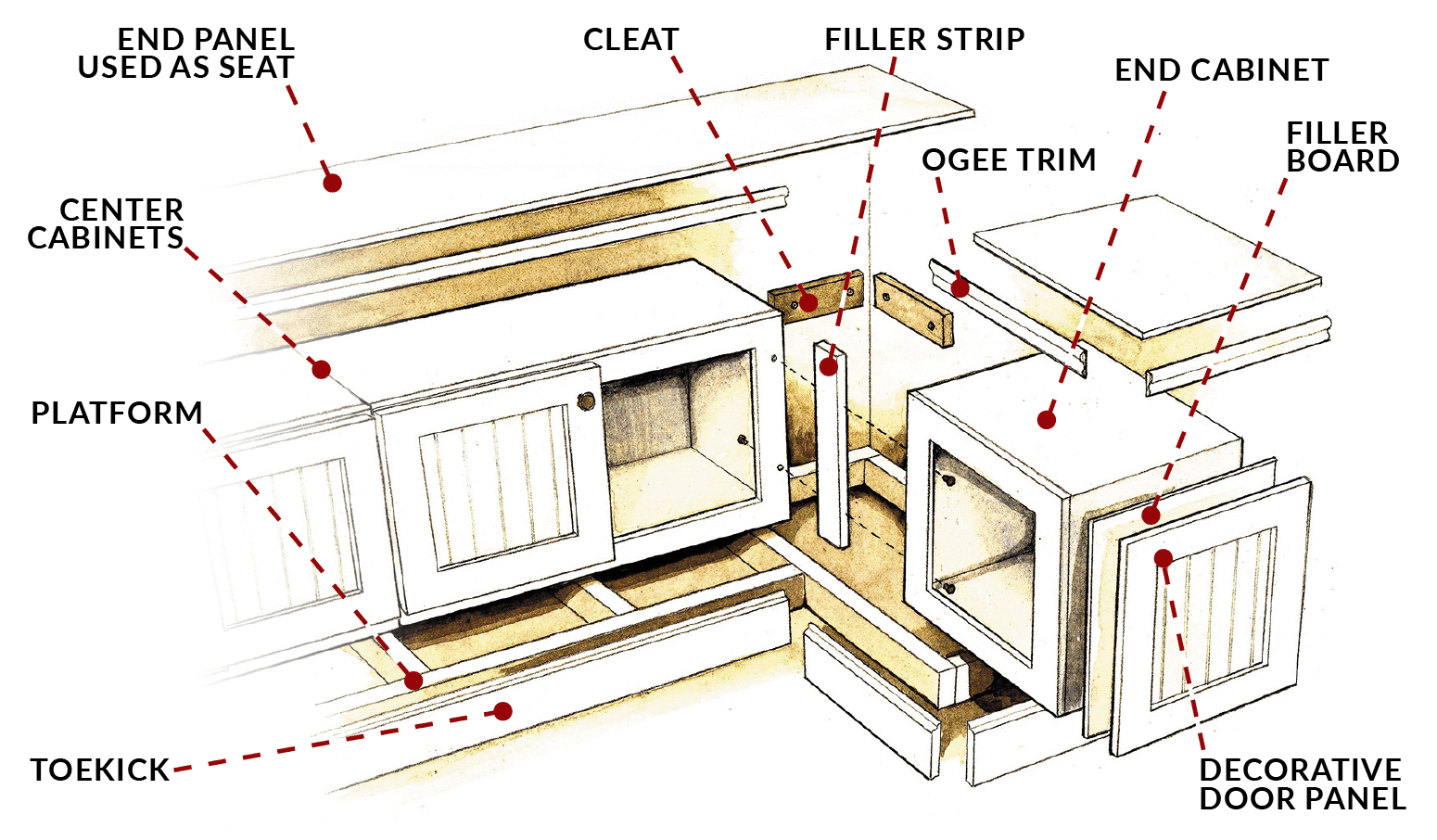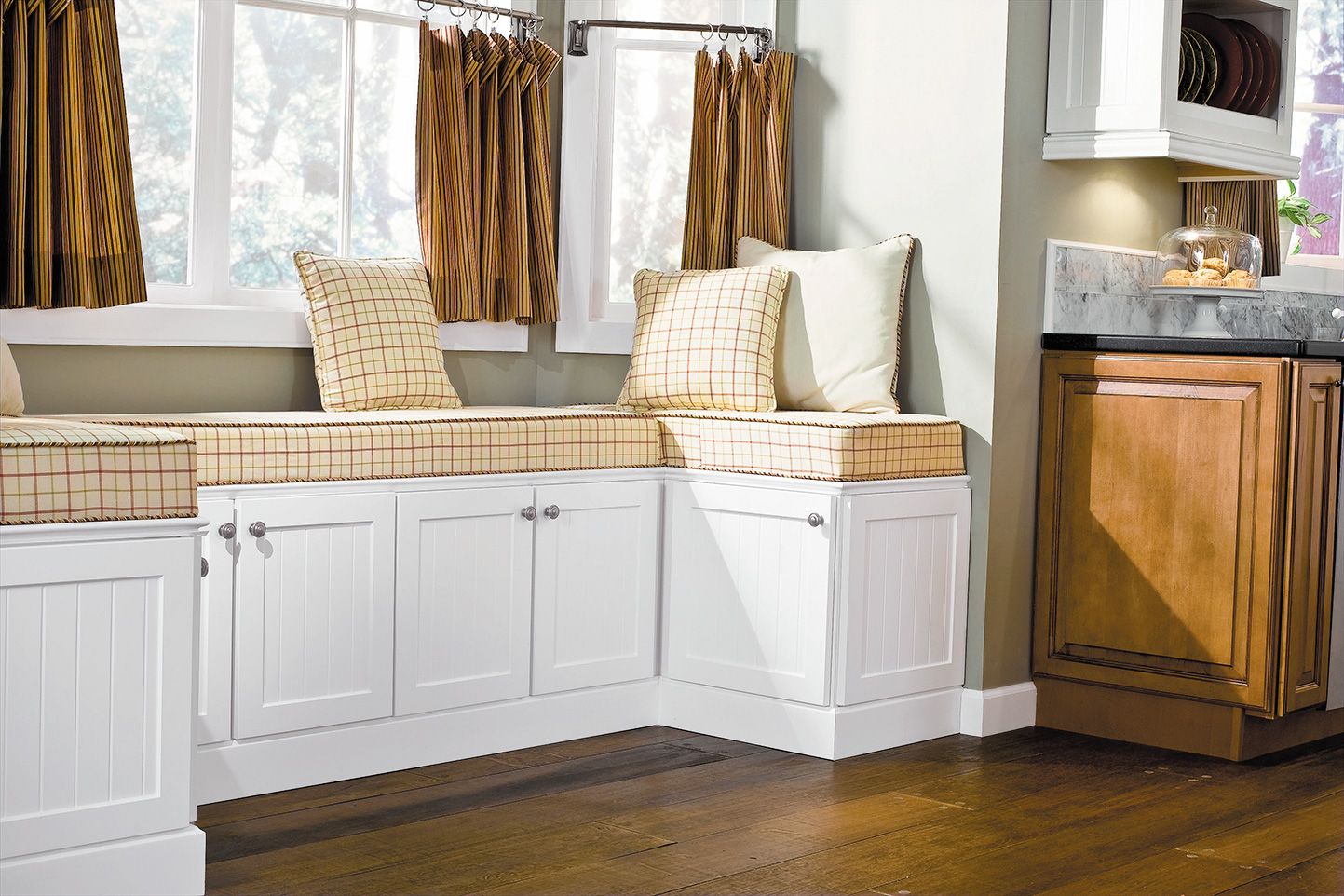We may be compensated if you purchase through links on our website. Our team is committed to delivering honest, objective, and independent reviews on home products and services.
Homeowners can turn their stock cabinets into beautiful and stylish sideboards with just a little creativity and basic woodworking skills. Stock cabinets are cost-effective, easy to modify, and using them can save homeowners money. Read our guide below to learn how to create a sideboard that complements their existing home decor.
Benefits of Using Stock Cabinets for a Sideboard
There are several benefits to using stock cabinets to create a sideboard, including the following:
- Cost-effective: Pre-made cabinets are often less expensive than custom-built options.
- Easy to modify: You can easily adapt stock cabinets with basic tools.
- Quality construction: Stock cabinets are durable and designed to withstand daily use.
- Time-saving: Using stock cabinets eliminates the need to build an entire structure from scratch.
- Variety: Stock cabinets come in various sizes and styles.
Planning Your Sideboard Project
Consider your space and any necessary materials you might need before beginning sideboard construction.
Measuring Your Space
Start by measuring your planned sideboard space. Consider length, height, and depth, and verify that the finished piece will fit without overwhelming the room. Account for any baseboards or other architectural features.
Choosing the Right Stock Cabinets
Choose cabinets with features that meet your needs, such as drawers or adjustable shelves. Consider mixing and matching different sizes to create a custom look. You might use a combination of base cabinets and wall cabinets for a combination of height and storage, for example. Base cabinets typically come in widths of 12, 15, 18, 21, 24, 30, 33, 36, and 48 inches.
Gathering Necessary Tools and Materials
Gather the tools and materials you’ll need for the project, including the following:
- Stock cabinets and countertop material
- 2×4 lumber for framing
- Brushes or rollers
- Caulk
- Drill and drill bits
- Level
- Paint or stain
- Safety glasses and gloves
- Sandpaper
- Saw (circular or table saw)
- Screwdriver
- Screws and nails
- Stud finder
- Tape measure
- Wood glue
Consider investing in special materials such as plywood for the base, trim pieces, and new hardware for a custom look, too.
Preparing the Stock Cabinets
You’ll need to prepare the stock cabinets before assembling your sideboard.
Removing Doors and Hardware
Remove the cabinet doors, drawers, and any existing hardware. This will make it easier to modify the cabinets and apply paint or stain. Store these components for potential later use.
Modifying Cabinets for a Custom Fit
You may need to modify your cabinets to achieve your desired look. This could involve cutting cabinets to a specific height, removing unnecessary dividers, or creating new openings for drawers or shelves. Always measure twice and cut once.
Creating a Solid Base for Your Sideboard Project
You must make a sturdy base to keep your sideboard stable.
Building a Platform for the Cabinets
Construct a simple platform using 2x4s and plywood. The platform should be about 4 inches tall and slightly larger than the combined footprint of your cabinets. You can use this to add decorative toe kicks or baseboards later. Secure the platform to the floor by driving screws through its outer framing at an angle.
Leveling the Base
Use a level to make sure your platform is perfectly flat. Make adjustments by shimming or sanding down high spots. You must create a level base for proper alignment.
Assembling the Sideboard

Joining the Cabinets Together
Carefully place your modified cabinets onto the base platform. Use clamps to hold them in place while you check for proper alignment. Secure the cabinets to each other using 2-inch wood screws or bolts. Make sure there’s space for the doors to open where the cabinets intersect by screwing 3-inch filler strips to the center cabinets’ face frames. Secure the end cabinets directly to the filler strips using 2 1/2-inch wood screws. Drill holes beforehand to prevent splitting the wood.
Securing Cabinets to the Wall
Anchor the entire unit to the back wall by driving 2-inch deck screws through the cabinets’ rear panels. Make sure to sink the screws into studs.
Adding a Countertop
Select a countertop material that complements your existing design, such as wood, laminate, or stone, if your base can support the weight. Cut the countertop to size and attach it to the top of the cabinets using construction adhesive and screws from underneath.
Installing Trim and Molding
Add baseboards or toe kicks to the bottom of the sideboard to conceal the platform and create a finished look. Install additional trim pieces such as crown molding or edge banding for extra polish.
Customizing Your Sideboard
Now you can add personal touches to make your sideboard unique.
Painting or Staining the Cabinets
Choose a paint color or wood stain that matches your decor. If you’re painting, sand the cabinets lightly, apply primer, and add two or three coats of paint. If you’re staining, sand the wood smooth and apply the stain according to the manufacturer’s instructions.
Installing New Hardware
Select new knobs, pulls, or handles that match your sideboard’s style. Make sure they‘re level and properly aligned.
Adding Decorative Elements
Add crown molding or decorative panels for a more custom look. These small details can enhance the overall appearance of your piece.
Adding Interior Shelving or Drawers
Install additional shelves or drawer units to customize the interior of your sideboard. This maximizes storage space and makes it easier to organize.
Troubleshooting Common Sideboard Issues
You may run into problems even if you plan carefully. Plan to potentially address the following issues:
- Baseboards and windows in the way: You may need to notch the back of the cabinets to accommodate baseboards or windowsills. Use a jigsaw to carefully cut out any necessary sections. This will give you a snug fit against the wall.
- Gaps between cabinets: You can fill small gaps between cabinets with wood filler or caulk. You can then sand them smooth and paint them to match. You may need to use thin strips of wood as fillers for larger gaps.
- Misaligned doors or drawers: Use a level to check that all doors and drawers are straight and flush. Adjust hinges or drawer tracks as necessary. This will help you to achieve a more finished look.
- Uneven floors: If your floor is slightly uneven, use adjustable legs, or add shims under the base platform to level the sideboard. This will prevent wobbling and help doors and drawers operate more smoothly.
Maintaining Your DIY Sideboard
Take proper care of your sideboard so that it looks great for years to come.
Cleaning and Care Tips
Regularly dust your sideboard and clean spills quickly to prevent staining. Use cleaning products that are appropriate for the finish you’ve chosen, whether it’s painted wood, stained wood, or another material. Avoid using abrasive cleaners that can damage surfaces.
When To Refinish or Update
Consider repainting or restaining every few years, or when the finish shows signs of wear. Update the hardware too for a quick facelift. Address scratches or dings promptly to prevent more significant damage.
Seasonal Adjustments
Wood furniture can expand and contract with seasonal humidity changes. Check periodically to make sure doors and drawers still operate correctly, and make adjustments as needed.

